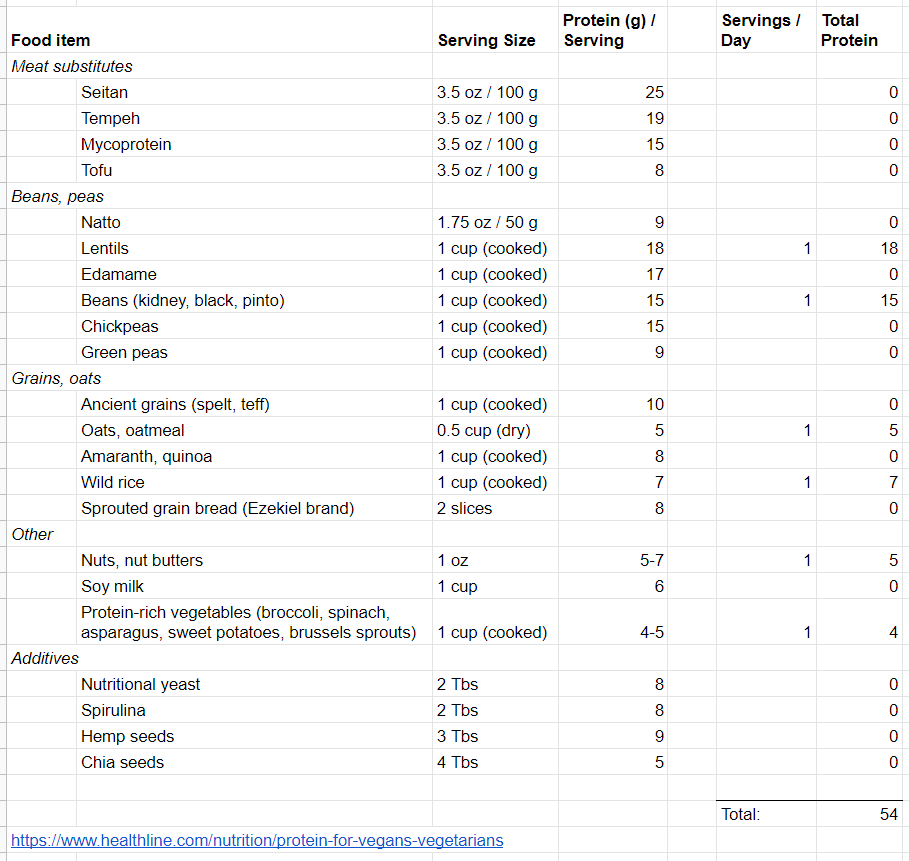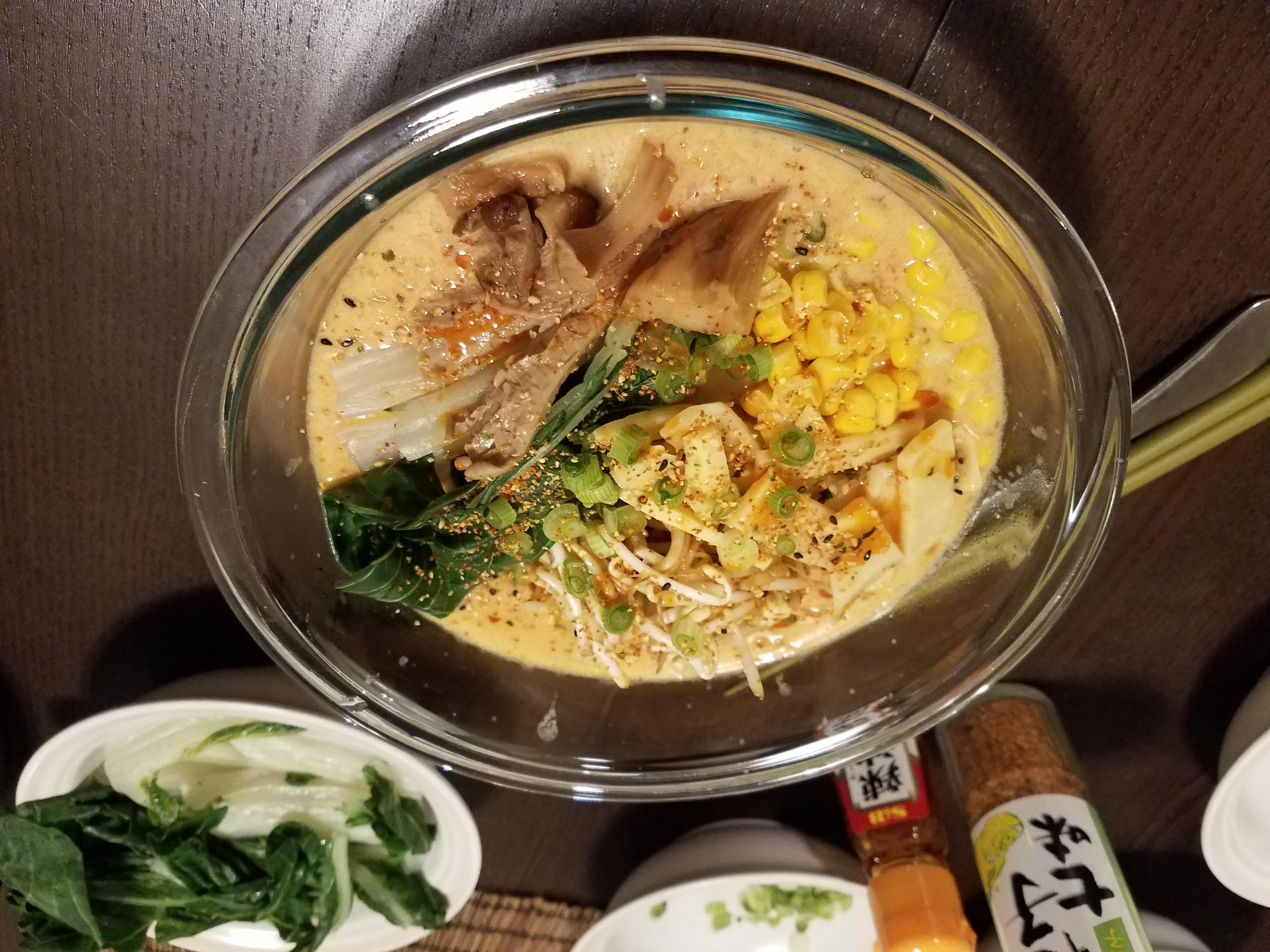Part 3 – Healthy Choices
No one was ever more interested in my dietary health as a vegetarian than was the entire town where I lived in Japan. People were convinced that I was not eating enough, despite the fact that I gained about 30 pounds in the two years that I lived there. A common concern was that I wasn’t getting enough protein, so the solution (naturally) was to give me extra rice in my school lunch instead. (That 30 pounds makes a lot more sense now, doesn’t it?) I still ate a lot of eggs, yogurt, cheese, tofu, and natto (fermented soybeans), all purchased from my local grocery store (and you had better believe that my shopping habits were common knowledge in town), but concerns about my health persisted.
And rightly so: those two years were easily the least healthy of my life. It was the first time I was living on my own and cooking for myself, fresh off a college meal plan. I ate a lot of rice and a lot of noodles because they were so easy. To indulge, I would drive 30 minutes to the closest McDonalds and order a cheeseburger without beef. The closest store that had foreign foods (like tortillas and refried beans) was two hours away, so I didn’t get much variety beyond Japanese food – and vegetarian Japanese food at that. The only positive thing I did for my health in those two years is that I started running.
For the past 20 years, I’ve probably been one of the most irresponsible vegetarians alive. I have not paid particular attention to my nutritional needs, nor have I ever been good about taking a daily multivitamin. So, in the name of more responsible health choices, I’m going to take this opportunity to look at a few areas of nutritional concern for vegetarians/vegans, starting with everyone’s favorite one: protein.
Disclaimer: I am not a nutritional expert – clearly. This information is pulled from the various sources referenced below. Always talk to your doctor before making changes to your diet.
Protein: How Much is Enough?
According to Dietary Guidelines for Americans, a publication released every five years from the US Department of Agriculture and the Department for Health and Human Services, “a healthy vegetarian dietary pattern can be achieved by incorporating protein foods from plants.” Glad we got that settled.

Image credit: [1] (Don’t sue me, Disney!)
All kidding aside, there is evidence that a healthy diet based on protein from “soy products (particularly tofu and other processed soy products); beans, peas, and lentils; nuts and seeds; and whole grains” is possible.[2] Protein is necessary to build muscle, as well as making “hair, blood, connective tissue, antibodies, and more.” According to the Harvard Health Blog, the Recommended Dietary Allowance (or minimum requirement for your body to perform these requisite functions) is 0.8 grams of protein per kilogram of body weight. According to this calculation, I should be getting about 47 grams of protein a day, minimum.[3]
The Dietary Guidelines for Americans report says I should be getting at least 46 g every day, as a woman aged 31-50. If we bring in additional factors, such as height and activity level, we get a range of recommended values from the American Dietetic Association, the Centers for Disease Control and Prevention, and the World Health Organization, all of which can be seen in the Protein Calculator.[4] While extra protein should be a consideration for athletes, few of us actually do the amount of physical activity that necessitates a major increase.
Based on numbers from the various sources mentioned above, minimum protein intake for my age, sex, height, and weight at my current (completely sedentary) lifestyle is anywhere from 36 to 49 grams per day. Minimum protein intake if I were training for a triathlon would be anywhere from 49 to 59 grams. For the sake of this argument, let’s shoot for 50. I have, in the past, achieved my daily protein intake eating primarily eggs (and a lot of them), but, as encouraged by Dietary Guidelines for Americans, protein increases should come from a variety of sources, not just more meat and eggs.
Here is an example of a daily vegan menu that would hit the 50g protein goal quite easily: one serving each of oatmeal, nuts, beans, wild rice, lentil soup, and protein-rich veggies, such as Brussels sprouts. I even put together a spreadsheet to check my calculations and help me plan for meals moving forward. The menu I just described is fairly similar to what I was already eating the week I started researching protein sources (beginner’s luck strikes again). I was quite surprised to find how many foods other than beans have protein hidden away in them.

There will be more to come on health next week, but for now we’ll look at my latest culinary adventure…
Recipe: Spicy Miso (Vegan) Ramen
Thinking back to my time in Japan made me incredibly hungry for my favorite dish: ramen. While I was there I had to have some flexibility in what “vegetarian” meant, mostly so I could eat. Shifting that line meant that, for example, I would eat soup that was made with bone broth, but I wouldn’t eat pieces of meat in the soup. In all honesty, it’s a line I still shift when we go back to visit. But because of that shift, I experienced the most amazing dish the country has to offer. And my absolute favorite style is miso – as spicy as you can make it.
I came across a vegan version earlier this month and couldn’t wait to try it. Christian and I spent one Friday evening making it together. Don’t let the 5-minute prep time fool you: that may be true for the soup, but the real time is in prepping the toppings. It took us two hours working together to get the final product on the table, but it was a wonderful date night activity that rekindled fond memories and intense wanderlust.
It makes use of some less-common ingredients that are described in more detail (what they are and where to get them) on the original recipe page.[6] While it in no way passes for the genuine article, it is rich and delicious in its own right. Amounts listed are for one serving (though I don’t know why you’d ever just make one, given this level of effort), so adjust up accordingly.

Soup ingredients:
- 1 dried shiitake mushroom
- 1” x 2” piece of dried kombu (kelp)
- 2 tsp sesame oil
- 1 Tbs sesame seeds
- 2 cloves garlic, minced
- ½” ginger, grated
- 1 scallion
- 2 tsp fermented broad bean paste (regular or spicy)
- 2 tsp miso paste
- 1 Tbs sake
- 2 tsp soy sauce
- 1 c unsweetened soy milk
- White pepper
- Salt
Ramen noodles (Try to find something authentic, but check ingredients carefully – the ones I wanted to buy included egg white.)
Optional ramen toppings:
- Scallions
- Sweet corn
- Nori (seaweed)
- Wood ear mushrooms
- Bamboo shoots
- Bean sprouts
- Kimchi
- Bok choy
- Deep fried tofu
Dashi (stock) prep:
Soak 1 dried shiitake mushroom and one 1”x2” piece kombu in ¾ c water for 30 minutes. Simmer in a pot, removing mushroom and kombu before boil. Set aside and let cool.
Soup prep:
Toast 1 Tbs sesame seeds in a pan until golden brown and then grind with a mortar and pestle. Press or mince 2 cloves garlic. Mince or grate ½” ginger. Slice 1 full scallion; keep the white part for the soup and set the green part aside for the toppings.
Soup assembly:
Add 2 tsp sesame oil to pot, add ginger, garlic, and white part of the scallion. Saute until soft, then add 2 tsp chili bean paste, 2 tsp miso paste, 1 Tbs sake, ground sesame seeds, 2 tsp soy sauce, 1 c unsweetened soy milk (slowly, while stirring), and ½ c dashi. Stir until heated and season with a dash of white pepper and ¼ tsp sea salt. Set aside and reheat when noodles are ready.
Ramen noodles:
Cook according to package instructions, minus about 30-60 seconds. Remove from boiling water directly into serving bowl.
Final assembly:
Put noodles in a serving dish and pour the soup on top. Add your favorite toppings and season with your favorite spicy condiments, e.g. shichimi togarashi (spice blend), rayu (chili oil).
~
I was thrilled to eat anything even close to what I got in Japan, and I was beyond thrilled that Christian was willing to try it. We were considerably less thrilled by the time we were done, having stuffed ourselves to the point of pain and quickly slipping into a food coma. Ironically there’s not much protein in this dish, aside from the soy milk and what you can get from tofu, coming out to about 15 g total, but I’m still happy to add it to my arsenal.
What are your favorite protein-rich vegan recipes? Please share them below.
Thanks for reading!
[1] https://www.mashed.com/608894/could-a-person-really-eat-5-dozen-eggs-like-gaston/
[2] https://www.dietaryguidelines.gov/sites/default/files/2020-12/Dietary_Guidelines_for_Americans_2020-2025.pdf
[3] https://www.health.harvard.edu/blog/how-much-protein-do-you-need-every-day-201506188096
[4] https://www.calculator.net/protein-calculator.html
[5] https://www.healthline.com/nutrition/protein-for-vegans-vegetarians
[6] https://www.justonecookbook.com/vegetarian-ramen/
0 Comments